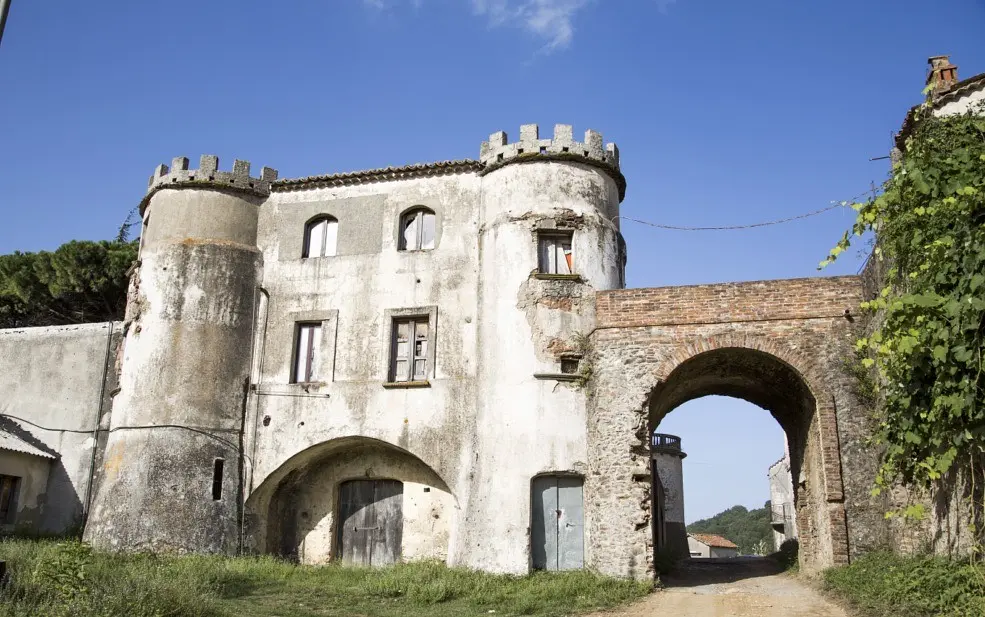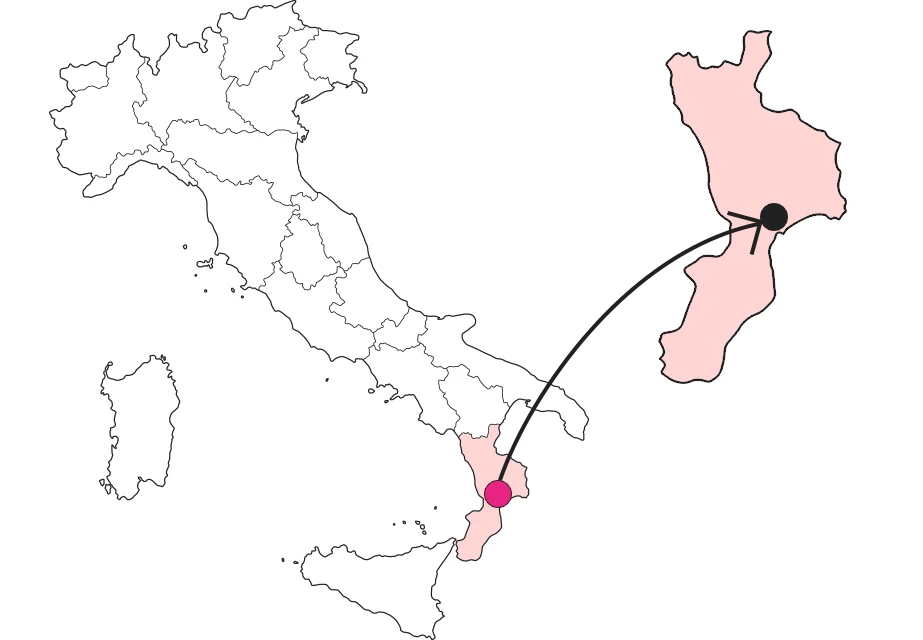



Cardinal - The Filangieri Castle
An evocative abandoned manor house pervaded by echoes of the great hunts its prince indulged in


Where

Deer and wild boar protagonists of ancient hunts
Not all castles have a warrior past. This one, in this case, despite its turreted features, was mostly used as a hunting lodge. Its story refers first to the Ravaschieri, an important local family, who ceded it, along with the principality of Satriano and the duchy of Cardinale, to Carlo Filangieri, a descendant of an ancient Neapolitan lineage, a leading figure in the Kingdom of the Two Sicilies in the troubled period between Napoleon and the Unification of Italy. Beauty of environment and historical suggestions make the castle, despite the ravages of time and earthquakes, a destination worthy of the stretch from Cardinale to the locality of Razzona, among the woods of the ridge that limits the Ancinale valley to the east .
The memory of a prince among the romantic ruins
The castle pours in neglect and has the chiaroscuro charm of places that had a past of greatness inexorably fading with time. A large archway leads into the courtyard overlooked by what was once the prince's residence and the guest quarters for his guests, as well as a whole series of ancillary buildings for the management of the estate. All around, forests at that time bountiful with game: game birds, above all, considering the rank of the castellan; wild boars, which still inhabit them; and deer, which only recently have been reintroduced to the Serre Park.
A puzzling history, the Filangieri ironworks.
Not far from the castle, the ruins of the Razzona ironworks, which was among the most noteworthy in the Kingdom of the Two Sicilies, founded by Carlo Filangieri and reached the height of its notoriety in the 1820s, when parts for the construction of the so-called Ferdinandeo Bridge over the Garigliano, the first metal suspension bridge to be built in Italy, came out of its forges. The ironworks was devastated byflooding in 1855, at a difficult time for the kingdom, which a few years later would be turned upside down by Garibaldi's Thousand, and this explains why what was a flagship of southern industry found no way to rise again.
Enter the Map of Italy's Undiscovered Wonders and find treasures where you least expect it... Inspire, Recommend, Share...
The Map thanks:
PSC 2014-2020 del Ministero del turismo - Avviso “Montagna Italia” - Progetto le Montagne del sole - Codice CUP J38J22000450008


